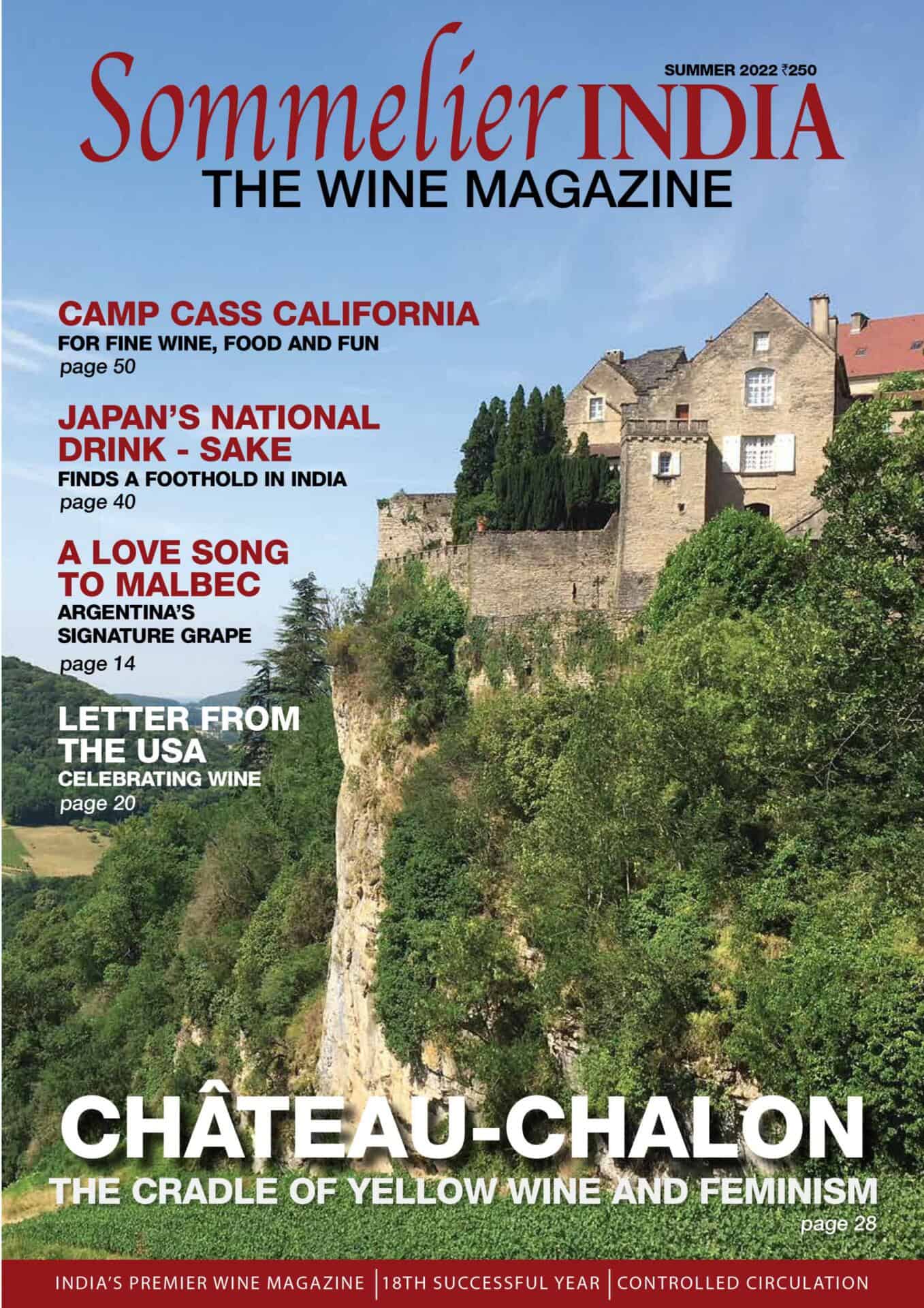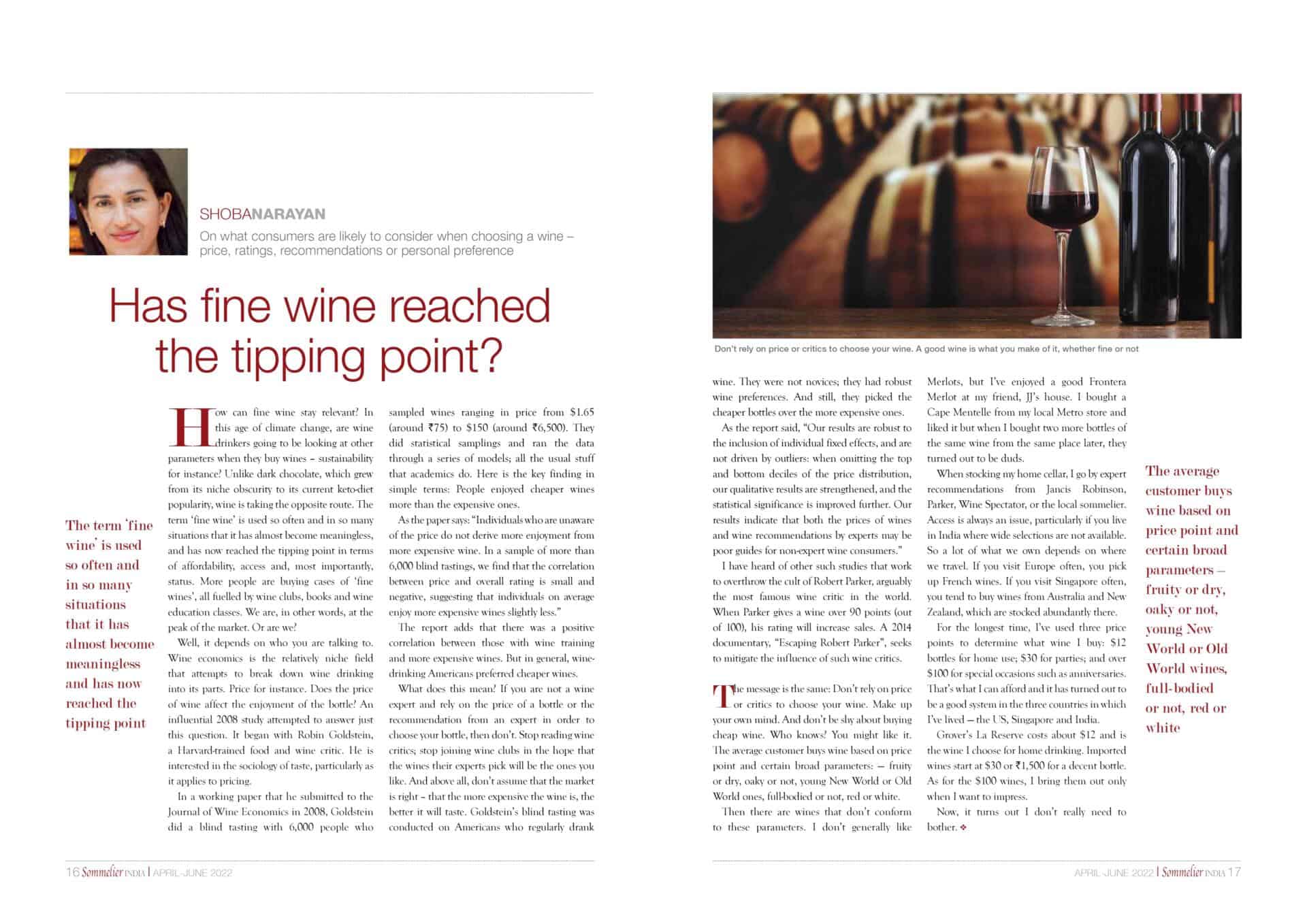For Sommelier India Magazine
How can fine wine stay relevant? In this age of climate change, are wine drinkers going to be looking at other parameters when they buy wines– sustainability for instance. Unlike dark chocolate, which grew from its niche obscurity to its current keto-diet popularity, wine is taking the opposite route. Fine wine—the term is used so often and in so many situations that it has almost become meaningless—has now reached the tipping point in terms of affordability, access and most importantly, status. More people are buying cases of “fine wines”, all fuelled by wine clubs, books and wine education classes. We are, in other words, at the peak of the market. Or are we? Well, it depends on who you are talking to. Wine economics is the relatively niche field that attempts to take apart wine drinking into its parts. Price for instance. Does the price of wine affect the enjoyment of the bottle. An influential 2008 study attempted to answer just this question.
It began with Robin Goldstein, a Harvard-trained food and wine critic. He is interested in the sociology of taste, particularly as it applies to pricing. In a working paper that he submitted to the Journal of Wine Economics in 2008, Goldstein did a blind tasting with 6,000 people who sampled wines ranging in price from $1.65 (around ₹ 75) to $150 (around ₹ 6,500). They did statistical samplings and ran the data through a series of models; all the usual stuff that academics do.
Here is the key finding in simple terms: People enjoyed cheaper wines more than the expensive ones. As the paper says: “Individuals who are unaware of the price do not derive more enjoyment from more expensive wine. In a sample of more than 6,000 blind tastings, we find that the correlation between price and overall rating is small and negative, suggesting that individuals on average enjoy more expensive wines slightly less.”

The report adds that there was a positive correlation between those with wine training and more expensive wines. But in general, wine-drinking Americans preferred cheaper wines.
What does this mean? If you are not a wine expert and rely on the price of a bottle or the recommendation from an expert in order to choose your bottle, then don’t. Stop reading Wine Spectator; stop joining wine clubs in the hope that the wines their experts pick will be the ones you like. And above all, don’t assume that the market is right—that the more expensive the wine is, the better it will taste. Goldstein’s blind tasting was conducted on Americans who regularly drank wine. They were not novices; they had robust wine preferences. And still, they picked the cheaper bottles over the more expensive ones.
As the report said, “Our results are robust to the inclusion of individual fixed effects, and are not driven by outliers: when omitting the top and bottom deciles of the price distribution, our qualitative results are strengthened, and the statistical significance is improved further. Our results indicate that both the prices of wines and wine recommendations by experts may be poor guides for non-expert wine consumers.”
I have heard of other such studies that work to overthrow the cult of Robert Parker, arguably the most famous wine critic in the world. When Parker gives a wine over 90 points (out of 100), his rating will increase sales. A 2014 documentary, Escaping Robert Parker, seeks to mitigate the influence of such wine critics.

The message is the same: Don’t rely on price or critics to choose your wine. Make up your own mind. And don’t be shy about buying cheap wine. Who knows? You might like it.
The average wine customer buys based on price point and certain broad parameters: fruity or dry; oaky or not; young New World wines or Old World ones; full-bodied or not; red or white.
Then there are wines that don’t conform to these parameters. I don’t generally like Merlots, but I’ve enjoyed a good Frontera Merlot at my friend JJ’s house. I bought a Cape Mentelle from my local Metro store and liked it but when I bought two more bottles of the same wine from the same place later, they turned out to be duds.
When stocking my home cellar, I go by expert recommendations from Jancis Robinson, Parker, Wine Spectator, or the local sommelier. Access is always an issue, particularly if you live in India where wide selections are not available. So a lot of what we own depends on where we travel. If you visit Europe often, you pick up French wines. If you visit Singapore often, you tend to buy wines from Australia and New Zealand, which are stocked abundantly there.
For the longest time, I’ve used three price points to determine what wine I buy: $12 bottles for home use; $30 for parties; and over $100 for special occasions such as anniversaries.
That’s what I can afford and it has turned out to be a good system in the three countries I’ve lived in: the US, Singapore and India.
Grover’s La Reserve costs about $12 and it is the wine I choose for home drinking. Imported wines start at $30, or ₹1,500 for a decent bottle. As for the $100 wines, I bring them out only when I want to impress.
Turns out I don’t really need to bother.




Leave A Comment